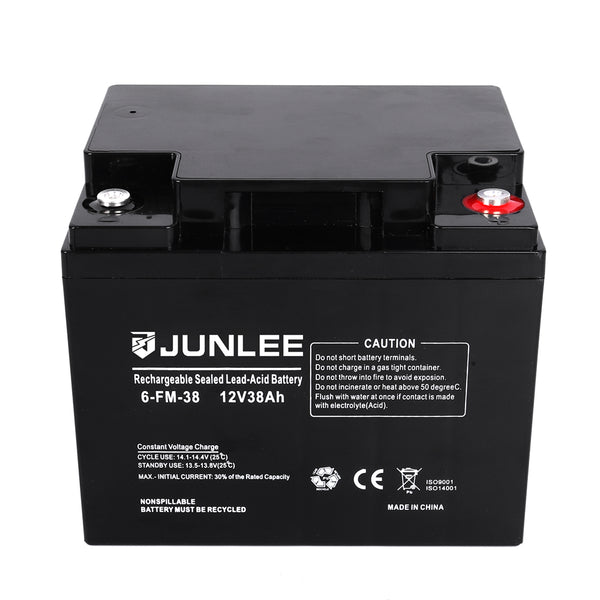Find top-rated Lithium Battery for sale at the best prices
skype:Junlee-ashley
+86 13434236097
What are the different types of lead acid battery?
1, ordinary battery
The plates of ordinary batteries are made of lead and lead oxides, and the electrolyte is an aqueous solution of sulfuric acid. Its main advantages are stable voltage and low price; disadvantages are low specific energy (that is, the electric energy stored per kilogram of battery), short service life and frequent routine maintenance.
2, dry charge battery Its full name is dry-type charged lead-acid battery. Its main feature is that the negative plate has a higher power storage capacity. In a completely dry state, it can save the obtained power within two years. When using it, only need to add electrolysis Liquid, wait for 20-30 minutes before use.
3, maintenance-free lead-acid battery
maintenance-free lead-acid battery due to its own structural advantages, the consumption of electrolyte is very small, basically no need to add distilled water during the service life. It has the characteristics of shock resistance, high temperature resistance, small size and small self-discharge. The service life is generally twice that of ordinary lead-acid batteries. There are also two types of maintenance-free lead-acid batteries on the market: one is that the electrolyte is added once at the time of purchase and there is no need to add supplementary fluid after use; the other is that the battery itself has been filled with electrolyte and sealed when it leaves the factory. The user cannot add refill at all.
4, valve-regulated sealed lead-acid battery Valve-regulated sealed lead-acid batteries do not need to add acid and water for maintenance during the trial period. The battery has a sealed structure, which will not leak acid or discharge acid mist. There is an overflow valve (also called a safety valve) on the battery cover. Its function is to prevent air from entering the battery by automatically opening the relief valve when the gas inside the battery exceeds a certain value, that is, when the gas pressure inside the battery rises to a certain value.
Valve-regulated sealed lead-acid batteries are divided into two types: AGM and GEL (gel) batteries. AGM uses adsorbed glass mat (absorbed glass mat) as the diaphragm. The electrolyte is absorbed in the plates and diaphragms. There is no flowing electrolyte in the battery. The battery can be placed upright or lying down. The colloid (GEL) is made of SiO2. The coagulant and the electrolyte are adsorbed in the electrode plate and the colloid, and generally work in a vertical position. Unless otherwise specified, VRLA batteries refer to AGM batteries.
The power battery used in electric vehicles is generally a valve-regulated sealed lead-acid battery.
JUNLEE Group is an integrated full power energy factory that specializes in Uninterruptible Power Supply (UPS), Lead-Acid Battery, Battery pack, EV battery, Energy Storage Battery, Energy storage power station, Power pack Gel battery, PV Inverter and Solar system.
Production capacity reach 200000 KVaH per month. Products apply to Electric vehicles,electric mobility, solar & wind energy storage system, UPS, backup power, telecommunication, medical equipment and lighting.
JUNLEE sets up "Power research center" with more High-tech products.More than 100 engineers provided in-time and efficient one-stop solutions.
They mission strives to bring green power to the world.
To learn more about Li-ion batteries, please refer to https://www.junleepower.com/
Leave a comment


